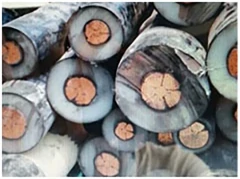Metal shredders have emerged as indispensable tools for industries focusing on recycling and waste management. Their pivotal role in transforming bulky metal waste into manageable units underscores the significance of deploying effective shredding solutions. The metal can shredder, in particular, is a specialized tool designed to expedite the recycling process of aluminum and steel cans. Employing such a shredder not only enhances operational efficiency but also plays a crucial part in promoting environmental sustainability.

The operational experience with metal can shredders reveals their capability to drastically reduce the volume of metal waste. Typically, the process begins with the collection of discarded metal cans, often comprising aluminum or steel. The cans are then fed into the shredder, where an array of sharp blades and high-speed motors work in tandem to cut the metal into smaller, manageable pieces. This reduction makes transportation to recycling facilities more economical and contributes to a cleaner operational environment.
Understanding the technical expertise involved in the manufacture and operation of metal can shredders is pivotal for optimizing their use.
These machines are engineered with robust materials to withstand the demands of shredding metal. Various types of shredders are available, each designed to tackle specific industrial needs. For instance, single-shaft shredders focus on power and precision, while dual-shaft shredders emphasize high-capacity and continuous operation. Selecting the appropriate shredder type requires a blend of knowledge about material specifications, throughput requirements, and maintenance capabilities.

The authoritative advantages of using a metal can shredder are multifaceted. Industries utilizing these machines report considerable savings in waste management costs. By compacting the scrap into smaller, more transportable units, companies can significantly minimize the space required for storage and reduce logistical expenses. This operational advantage is further amplified as businesses align with environmental regulations, thereby avoiding potential fines and enhancing their market reputation as environmentally conscious entities.
metal can shredder
Trustworthiness in the context of metal can shredders is reflected in the commitment to safety and reliability. Reputable manufacturers ensure their machines are equipped with safety features such as emergency stop buttons and protective barriers, reducing the risk of accidents during operation. Periodic maintenance is critical, involving regular checks and part replacements to ensure uninterrupted performance. Users are encouraged to undergo training sessions where skilled technicians impart valuable knowledge on maintaining optimal operation standards and troubleshooting common issues.
Furthermore, the environmental impact of metal can shredders is notable. By facilitating the recycling process, these machines help in reducing landfill waste, conserving natural resources, and lowering carbon footprints associated with metal production. Recycling aluminum, for example, can save up to 95% of the energy required to produce new aluminum. This massive energy saving makes metal shredder operations not only economically beneficial but ecologically sound as well.
In conclusion, the metal can shredder serves as a cornerstone for industrial recycling efforts, marrying efficiency with environmental responsibility. Its deployment requires a nuanced understanding of technical and operational parameters to maximize benefits. As industries lean towards sustainable practices, these shredders will likely see increased adoption, reinforcing their role as crucial contributors to the recycling ecosystem. The commitment to quality, safety, and performance stands as a testament to the indispensable nature of metal can shredders in modern waste management practices.


